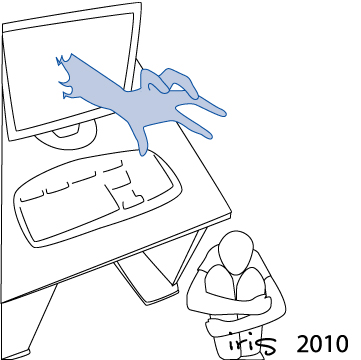The ability to use social media to shame and hurt people online is called online shaming. You may have heard of versions of online shaming going by names like cyber bullying or revenge porn. Although you may be aware of online shaming, many of us still feel helpless to stop it. Technology has the power to transform people’s lives, but in the wrong hands, it can be used to destroy lives.
One story that captured the attention of the world was that of Tyler Clementi. On Sept. 22, 2010 Tyler went to the George Washington Bridge connecting New York City and New Jersey, and updated his Facebook status: “Jumping off the gw bridge sorry.” The day before, Tyler’s roommate had posted a video of Tyler being intimate with another man without Tyler’s knowledge. The public humiliation was too unbearable for Tyler and he made the decision to end his life.
Tyler’s family took steps to help ensure that online shaming like what happened to Tyler would be addressed. “When we started the foundation, one of the reasons was because we had media attention,” says Jane Clementi.”So many people saw what was going on and no one spoke up,” she says. “No one reached out to Tyler.”
The Tyler Clementi Foundation focuses on helping adults clearly communicate their expectations for respectful behavior. They believe in turning bystanders into “upstanders” who won’t condone bullying, no matter where it takes place. Since 2011, the Clementi family has spoken to thousands of people about not only calling out harassment, but also comforting and helping the victim. But awareness is not enough to solve the problem. That’s why the foundation partnered with New York Law School to launch the Tyler Clementi Institute for CyberSafety last fall. The institute helps give legal advice and council to parents dealing with cyber bullying, as well as victims of nonconsensual porn, another term for revenge porn or cyber exploitation.
Removing nonconsensual porn has gotten somewhat easier in the last year thanks to Internet and social media companies like Google, Twitter and Facebook adopting streamlined request processes. (In contrast, though, content that merely bullies breaks no laws; the threshold to successfully report and remove such comments is much higher.) In the past, the online shaming was confined to certain forums and message boards. But the rise of social media over the last decade has amplified the effects. Social media “can be easily exploited for shaming,” said Gabriella Coleman, a professor at New York University who studies media and culture. “It’s a good platform.”
In 2009, Brett Ligon, the newly elected district attorney in Montgomery County, Tex., decided to post on Twitter the names of drivers arrested on charges of drunken driving. He wanted to send a message that drunken driving would not be tolerated while he was district attorney. But not everyone was pleased. A handful of people who were named on Twitter complained to The Houston Chronicle after they found out their drunken driving arrests had been widely broadcasted. “I haven’t been proven guilty,” Linda Owens told the newspaper in January. “What happened to our rights?”
So what can you do about online shame? If you are a victim of cyberbullying or revenge porn make sure to keep records of what you are receiving. Giving the police urls and content may allow them to trace the IP address of your attacker. If pictures are involved, remember that pictures carry copyrights. If the picture is a selfie then you may be able to force the pictures off of sites since it violates copyright law. Online shame is not always a crime, as our laws have not yet caught up to our online environments. This is slowly being rectified as over half of all states now have revenge porn laws and legislation meant to ban revenge porn nationally is being pushed through congress.
The most important thing that any of us can do is be an “upstander“. Speak up when you see someone being harrassed. Stop the spread of malicious materials online. Don’t forget to comfort the victim and make sure that they know they are supported.
Article via Mashable, 21 February 2016; The New York Times,26 December 2010; Wired, 24 July 2013; DeleteCyberbullying; EndRevengePorn.org
Photo: Cyber Bullying: Hand Reach by iris [Creative Commons Attribution-NonCommercial-NoDerivs]




